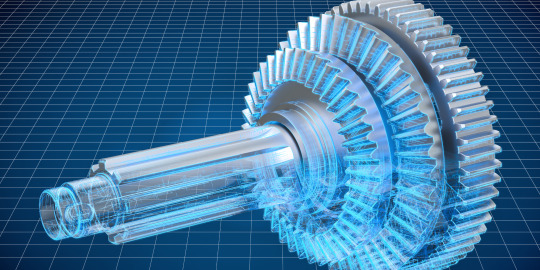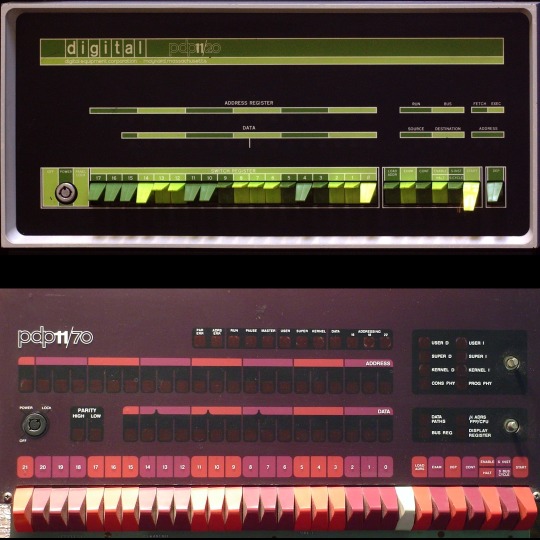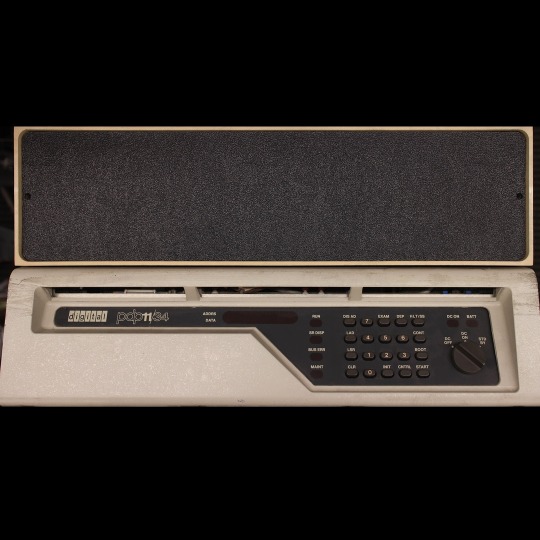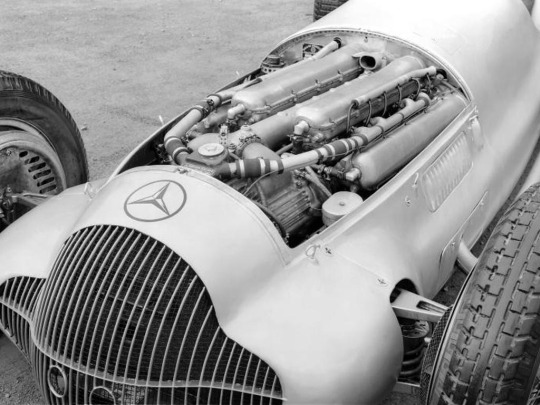#data engineering architecture
Explore tagged Tumblr posts
Text
Looking for Data Engineering service company. Look no futher than innovatics. innovatics is the best for the data and AI Solutions provider in india, USA and UK.
#data engineering#data engineering services#data engineering consulting company#data engineering consulting services company#data engineering architecture#data engineering companies#data engineering solutions#data engineering course in hyderabad#artificial intelligence chatbot#data engineering service providers in usa#data engineering consulting services
0 notes
Text
#Healthcare data engineering challenges#Data strategy for healthcare#Healthcare data transformation#Serverless architecture in healthcare#Healthcare analytics strategy#Data engineers in healthcare
0 notes
Text
Best Residential & Landscape Architectural firms in Bhubaneswar
Bhubaneswar, the capital city of Odisha, is rapidly evolving into a hub of modern infrastructure and stylish living. With the city’s growth comes a rising demand for thoughtfully designed spaces—both indoors and out. As a result, Lokmatri is playing a crucial role in shaping the cities residential and landscape aesthetics.

Whether you're building your dream home or planning to redesign your outdoor environment, working with the Best Architects in Bhubaneswar ensures that your vision comes to life with creativity, functionality, and precision. These professionals blend traditional charm with contemporary styles, offering tailor-made solutions that reflect your personality and lifestyle.
Residential Architects in Bhubaneswar:
Designing a home is more than just creating a structure—it’s about building a space that complements your way of living. Residential Architects in Bhubaneswar focus on creating designs that balance form and function. From compact urban homes to luxurious villas, they understand how to utilize space efficiently while enhancing comfort and beauty.
These experts also handle crucial details like building regulations, structural integrity, energy efficiency, and smart space planning. With their expertise, homeowners can expect stylish, durable, and sustainable living spaces—perfect for Bhubaneswar’s growing urban landscape.
Landscape Architects Bhubaneswar
Outdoor spaces are just as important as the interiors. Landscape architects in Bhubaneswar specialize in transforming open areas into stunning, usable environments that elevate your property’s appeal. Whether it’s a peaceful garden, a vibrant courtyard, or a modern outdoor lounge, these spaces can transform your home. Well-planned landscapes dramatically improve your quality of life.
They incorporate natural elements, lighting, water features, and sustainable materials to ensure your outdoor space feels like a seamless extension of your home. These designs are not only beautiful but also environmentally responsible, supporting biodiversity and reducing urban heat.
Choosing the Right Architectural Partner
Selecting the right firm is essential to achieving the perfect blend of aesthetics and functionality. While there are many Architectural Firms in Bhubaneswar, choosing one that understands your unique needs makes all the difference. From initial concept to final execution, your architect should work closely with you to bring your ideas to life with precision and care.
One standout firm in the region is Lokmatri, known for its commitment to design excellence in both residential and landscape architecture. Their projects reflect a deep understanding of space, nature, and the local context—resulting in spaces that are visually striking and highly livable.

In conclusion, whether you’re constructing a new home or revamping your outdoor space, partnering with the best architects in Bhubaneswar ensures a seamless and rewarding experience. With the right guidance, your dream space can become a stunning reality that reflects your personality and enhances your everyday life. Are you ready to transform your space? Start by consulting with Bhubaneswar’s top architects today.
#Architectural firm#Best architects#Residential architects#Landscape architects#MEP services#MEP contractors#Industrial MEP services#Data center MEP services#Energy-efficient MEP solutions#Civil engineering services#Structural engineering services#Luxury interior design#Retail store interior#Hospital interior design#Hotel interior design#Interior design company#Home interior designers#Commercial interior design#Office interior design#Corporate office interiors#Modular kitchen Design#Pre-engineered buildings#Steel building construction#Warehouse construction company#Commercial construction company#Construction company
1 note
·
View note
Text
Data Engineering Services Explained: What Lies Ahead for the Industry
In an era where data shapes every aspect of business decision-making, organizations are turning to data engineering to harness its full potential. As data volumes and complexities escalate, the demand for specialized data engineering services has surged. This article delves into the core components of data engineering services and offers insights into the evolving future of this critical field.

What are Data Engineering Services?
Data engineering involves the design, construction, and maintenance of systems and infrastructure that allow for the collection, storage, processing, and analysis of data. Data engineering services encompass a variety of tasks and functions that ensure data is accessible, reliable, and usable for data scientists, analysts, and business stakeholders. Key components of data engineering services include:
1. Data Architecture
Data engineers are responsible for designing data architectures that define how data is collected, stored, and accessed. This includes selecting appropriate databases, data lakes, and data warehouses to optimize performance and scalability.
2. Data Integration
Data often comes from multiple sources, including transactional systems, external APIs, and sensor data. Data engineering services involve creating ETL (Extract, Transform, Load) processes that integrate data from these various sources into a unified format.
3. Data Quality and Governance
Ensuring data quality is critical for accurate analysis. Data engineers implement data validation and cleansing processes to identify and rectify errors. They also establish governance frameworks to maintain data integrity and compliance with regulations.
4. Data Pipeline Development
Data pipelines automate the flow of data from its source to storage and processing systems. Data engineering services focus on building efficient pipelines that can handle large volumes of data while ensuring minimal latency.
5. Performance Optimization
As organizations scale, performance becomes a crucial consideration. Data engineers optimize databases and pipelines for speed and efficiency, enabling faster data retrieval and processing.
6. Collaboration with Data Teams
Data engineers work closely with data scientists, analysts, and other stakeholders to understand their data needs. This collaboration ensures that the data infrastructure supports analytical initiatives effectively.
The Future of Data Engineering
As the field of data engineering evolves, several trends are shaping its future:
1. Increased Automation
Automation is set to revolutionize data engineering. Tools and platforms are emerging that automate repetitive tasks such as data cleansing, pipeline management, and monitoring. This will allow data engineers to focus on more strategic initiatives rather than manual processes.
2. Real-time Data Processing
With the rise of IoT devices and streaming applications, the demand for real-time data processing is growing. Future data engineering services will increasingly incorporate technologies like Apache Kafka and Apache Flink to facilitate real-time data ingestion and analytics.
3. Cloud-based Solutions
Cloud computing is becoming the norm for data storage and processing. Data engineering services will continue to leverage cloud platforms like AWS, Google Cloud, and Azure, offering greater scalability, flexibility, and cost-effectiveness.
4. DataOps
DataOps is an emerging discipline that applies agile methodologies to data management. It emphasizes collaboration, continuous integration, and automation in data pipelines. As organizations adopt DataOps, the role of data engineers will shift toward ensuring seamless collaboration across data teams.
5. Focus on Data Security and Privacy
With growing concerns about data security and privacy, data engineers will play a vital role in implementing security measures and ensuring compliance with regulations like GDPR and CCPA. Future services will prioritize data protection as a foundational element of data architecture.
6. Integration of AI and Machine Learning
Data engineering will increasingly intersect with artificial intelligence and machine learning. Data engineers will need to build infrastructures that support machine learning models, ensuring they have access to clean, structured data for training and inference.
Conclusion
Data engineering services are essential for organizations seeking to harness the power of data. As technology continues to advance, the future of data engineering promises to be dynamic and transformative. With a focus on automation, real-time processing, cloud solutions, and security, data engineers will be at the forefront of driving data strategy and innovation. Embracing these trends will enable organizations to make informed decisions, optimize operations, and ultimately gain a competitive edge in their respective industries.
#Data Engineering Services#Data Security#Data Privacy#Future of Data Engineering#Data Architecture#Data Governance
0 notes
Text
Innovative Data Engineering for Strategic Decision-Making

Unlocking the Power of Data: The Role of Data Engineering in Modern Businesses
In today's data-driven world, businesses are increasingly relying on vast amounts of data to make informed decisions, streamline operations, and drive growth. However, the true potential of data can only be harnessed when it is efficiently collected, processed, and analyzed. This is where Data Engineering comes into play—a critical component that forms the backbone of any successful data strategy. At aakarshansedge.com, our Data Engineering services are designed to transform raw data into actionable insights, empowering businesses to thrive in the digital age.
Key Benefits of Our Data Engineering Services Scalability: For scalability in our Data Engineering Services, we ensure that our solutions can seamlessly adapt to increasing data volumes and complexity. Our infrastructure is designed to handle growth efficiently, providing robust performance and flexibility as your data needs evolve. Data Quality: Poor data quality can lead to inaccurate insights and misguided decisions. We implement rigorous data cleaning and validation processes to ensure that your data is accurate, consistent, and trustworthy. Efficiency: In the corporate world, time is of the essence. Our efficient data pipelines and optimized processing techniques minimize latency, allowing you to access and analyze data in real-time. Security and Compliance: With data privacy regulations becoming increasingly stringent, we prioritize security and compliance in all our data engineering projects. We implement robust encryption, access controls, and monitoring systems to protect your data. Cost-Effectiveness: We help you optimize your data storage and processing costs by leveraging cloud platforms and modern data architectures, ensuring you get the most value out of your investment.
Technologies Used in Data Engineering
Big Data Frameworks - The Big Data frameworks at Aakarshan Edge include cutting-edge tools designed for scalable data processing and analytics, such as Apache Hadoop, Apache Spark, and Apache Flink.
Data Warehousing Solutions - Transform your data into actionable insights with our cutting-edge Data Warehousing Solutions, designed for scalability and efficiency at Aakarshan Edge."
Data Integration Tools - Discover top-tier data integration tools at Aakarshan Edge, designed to streamline and enhance your data management processes.
Database Technologies - The website Aakarshan Edge, utilizes advanced database technologies to ensure robust, scalable, and secure data management.
ETL Tools - The website Aakarshan Edge, utilizes cutting-edge ETL (Extract, Transform, Load) tools to streamline data processing and integration, ensuring efficient data management and insights.
Cloud Platforms - Aakarshan Edge offers innovative solutions across leading cloud platforms to enhance scalability and performance for your business.
Data Governance & Quality Tools - Implement robust Data Governance and Quality Tools to ensure the accuracy, consistency, and security of your data assets.
Data Visualization Tools - Transform complex data into clear, actionable insights with our advanced data visualization tools. From interactive dashboards to customizable charts, we empower your business to make data-driven decisions with ease.
Programming Languages - The website Aakarshan Edge, uses a combination of programming languages including HTML, CSS, JavaScript, and potentially server-side languages like PHP or Python.
Machine Learning Libraries - The website Aakarshan Edge, features cutting-edge machine learning libraries to enhance data analytics and predictive modeling.
Why Choose Aakarshan Edge for Data Engineering?
At Aakarshan Edge, we understand that every business is unique, and so are its data challenges. Our approach to data engineering Solutions is highly customized, focusing on understanding your specific needs and delivering solutions that align with your business objectives. Our team of experienced data engineers is well-versed in the latest technologies and best practices, ensuring that your data infrastructure is future-proof and capable of driving innovation.
Conclusion
our Data Engineering Services at Aakarshan Edge are designed to empower your business with robust data solutions that drive efficiency and innovation. By leveraging advanced technologies and tailored strategies, we ensure that your data infrastructure is not only scalable but also aligned with your strategic goals. Partner with us to transform your data into a powerful asset that enhances decision-making and fuels growth.
Contact us (+91-8860691214) (E-Mail: [email protected])
#Data Engineering Services#Data Engineering Solutions#Data Architecture Services#Big Data Engineering
0 notes
Text
AI as Your Creative Co-pilot: A Down-to-Earth Guide for the Architecture, Engineering & Construction Industries
Through experiments with generative design, simulations and human-AI partnerships, I've gained insights and surprising discoveries that have expanded my view of what's possible. In this post, I share lessons learned in the hope it inspires other architect
Hey there, friends and fellow explorers of the digital frontier. If you recall, I recently had the honor of giving the keynote presentation at the Canadian Society for Marketing Professional Services (CSMPS) Annual General Meeting about how Artificial Intelligence (AI) is revolutionizing the Architecture, Engineering, and Construction (AEC) industries. I’ve talked about how AI has revolutionized…

View On WordPress
#AEC industries#architecture#Artificial Intelligence#construction#creative co-pilot#data-driven design#engineering#ethical technology#real-time analytics
0 notes
Text
Unveiling the Power of 3D Visualization: Revolutionizing Engineering Applications

In the world of engineering, complex concepts and intricate designs often require effective means of communication to convey ideas, identify potential issues, and foster innovation. 3D visualization has emerged as a powerful tool that not only aids in comprehending intricate engineering concepts but also fuels creativity and enhances collaboration among multidisciplinary teams. This blog dives deep into the realm of 3D visualization for engineering applications, exploring its benefits, applications, and the technologies driving its evolution.
The Power of 3D Visualization
1. Enhanced Understanding: Traditional 2D drawings and diagrams can sometimes fall short in capturing the full complexity of engineering designs. 3D visualization empowers engineers, architects, and designers to create realistic and immersive representations of their ideas. This level of detail allows stakeholders to grasp concepts more easily and make informed decisions.
2. Identification of Design Flaws: One of the primary advantages of 3D visualization is its ability to identify potential design flaws before physical prototyping begins. Engineers can simulate real-world conditions, test stress points, and analyze the behavior of components in various scenarios. This process saves both time and resources that would have been wasted on rectifying issues post-construction.
3. Efficient Communication: When working on multidisciplinary projects, effective communication is essential. 3D visualization simplifies the sharing of ideas by presenting a clear visual representation of the design. This reduces the chances of misinterpretation and encourages productive discussions among team members from diverse backgrounds.
4. Innovation and Creativity: 3D visualization fosters creativity by enabling engineers to experiment with different design variations quickly. This flexibility encourages out-of-the-box thinking and exploration of unconventional ideas, leading to innovative solutions that might not have been considered otherwise.
5. Client Engagement: For projects involving clients or stakeholders who might not have technical expertise, 3D visualization serves as a bridge between complex engineering concepts and layman understanding. Clients can visualize the final product, making it easier to align their expectations with the project's goals.
Applications of 3D Visualization in Engineering
1. Architectural Visualization: In architectural engineering, 3D visualization brings blueprints to life, allowing architects to present realistic walkthroughs of structures before construction. This helps clients visualize the final appearance and make informed decisions about design elements.
2. Product Design and Prototyping: Engineers can use 3D visualization to create virtual prototypes of products, enabling them to analyze the functionality, ergonomics, and aesthetics. This process accelerates the design iteration phase and reduces the number of physical prototypes required.
3. Mechanical Engineering: For mechanical systems, 3D visualization aids in simulating motion, stress analysis, and assembly processes. Engineers can identify interferences, optimize part arrangements, and predict system behavior under different conditions.
4. Civil Engineering and Infrastructure Projects: From bridges to roadways, 3D visualization facilitates the planning and execution of large-scale infrastructure projects. Engineers can simulate traffic flow, assess environmental impacts, and optimize structural design for safety and efficiency.
5. Aerospace and Automotive Engineering: In these industries, intricate designs and high-performance requirements demand rigorous testing. 3D visualization allows engineers to simulate aerodynamics, structural integrity, and other critical factors before manufacturing.
Technologies Driving 3D Visualization
1. Computer-Aided Design (CAD): CAD software forms the foundation of 3D visualization. It enables engineers to create detailed digital models of components and systems. Modern CAD tools offer parametric design, enabling quick modifications and iterative design processes.
2. Virtual Reality (VR) and Augmented Reality (AR): VR and AR technologies enhance the immersive experience of 3D visualization. VR headsets enable users to step into a digital environment, while AR overlays digital content onto the real world, making it ideal for on-site inspections and maintenance tasks.
3. Simulation Software: Simulation tools allow engineers to analyze how a design will behave under various conditions. Finite element analysis (FEA) and computational fluid dynamics (CFD) simulations help predict stress, heat transfer, and fluid flow, enabling design optimization.
4. Rendering Engines: Rendering engines create photorealistic images from 3D models, enhancing visualization quality. These engines simulate lighting, materials, and textures, providing a lifelike representation of the design.
Future Trends and Challenges
As technology evolves, so will the field of 3D visualization for engineering applications. Here are some anticipated trends and challenges:
1. Real-time Collaboration: With the rise of cloud-based tools, engineers worldwide can collaborate on 3D models in real time. This facilitates global teamwork and accelerates project timelines.
2. Artificial Intelligence (AI) Integration: AI could enhance 3D visualization by automating design tasks, predicting failure points, and generating design alternatives based on predefined criteria.
3. Data Integration: Integrating real-time data from sensors and IoT devices into 3D models will enable engineers to monitor performance, identify anomalies, and implement preventive maintenance strategies.
4. Ethical Considerations: As 3D visualization tools become more sophisticated, ethical concerns might arise regarding the potential misuse of manipulated visualizations to deceive stakeholders or obscure design flaws.
In conclusion, 3D visualization is transforming the engineering landscape by enhancing understanding, fostering collaboration, and driving innovation. From architectural marvels to cutting-edge technological advancements, 3D visualization empowers engineers to push the boundaries of what is possible. As technology continues to advance, the future of engineering will undoubtedly be shaped by the dynamic capabilities of 3D visualization.
#3D Visualization#Engineering Visualization#CAD Software#Virtual Reality (VR)#Augmented Reality (AR)#Design Innovation#Visualization Tools#Product Design#Architectural Visualization#Mechanical Engineering#Civil Engineering#Aerospace Engineering#Automotive Engineering#Data Integration#Real-time Visualization#Engineering Trends#Visualization Technologies#Design Optimization
1 note
·
View note
Text
Optimize your business with Innovatics' cutting-edge data engineering services, turning raw data into actionable insights. Drive innovation and unlock your business's full potential with our data engineering specialists.
#data engineering#data engineering services#data engineering consulting#data engineering solutions#data engineering companies#data engineering architecture#data engineer roadmap
0 notes
Text
What is the difference between Data Scientist and Data Engineers ?
In today’s data-driven world, organizations harness the power of data to gain valuable insights, make informed decisions, and drive innovation. Two key players in this data-centric landscape are data scientists and data engineers. Although their roles are closely related, each possesses unique skills and responsibilities that contribute to the successful extraction and utilization of data. In…
View On WordPress
#Big Data#Business Intelligence#Data Analytics#Data Architecture#Data Compliance#Data Engineering#Data Infrastructure#Data Insights#Data Integration#Data Mining#Data Pipelines#Data Science#data security#Data Visualization#Data Warehousing#Data-driven Decision Making#Exploratory Data Analysis (EDA)#Machine Learning#Predictive Analytics
1 note
·
View note
Text


[JK] My first job was as an Assistant Producer for a video game company called Interplay in Irvine, CA. I had recently graduated from Boston University's School of Fine Arts with an MFA in Directing (I started out as a theatre nerd), but also had some limited coding experience and a passion for computers. It didn't look like I'd be able to make a living directing plays, so I decided to combine entertainment and technology (before it was cool!) and pitched myself to Brian Fargo, Interplay's CEO. He gave me my first break. I packed up and moved out west, and I've been producing games ever since.

[JK] I loved my time at EA. I was there for almost a full decade, and learned a tremendous amount about game-making, and met the most talented and driven people, who I remain in touch with today. EA gave me many opportunities, and never stopped betting on me. I worked on The Sims for nearly 5 years, and then afterwards, I worked on console action games as part of the Visceral studio. I was the Creative Director for the 2007 game "The Simpsons", and was the Executive Producer and Creative Director for the 2009 game "Dante's Inferno".

[JK] I haven't played in a long while, but I do recall that after the game shipped, my wife and I played the retail version for some time -- we created ourselves, and experimented with having a baby ahead of the actual birth of our son (in 2007). Even though I'd been part of the development team, and understood deeply how the simulation worked, I was still continually surprised at how "real" our Sims felt, and how accurate their responses were to having a baby in the house. It really felt like "us"!
Now for some of the development and lore related questions:

[JK] So I ended up in the incredibly fortunate position of creating the shipping neighborhoods for The Sims 2, and recruiting a few teammates to help me as we went along.
Around the same time, we started using the Buy/Build tools to make houses we could save, and also bring them into each new build of the game (correcting for any bugs and incompatibilities). With the import tool, we could load Sims into these houses. In time, this "vanguard QA" process turned into a creative endeavor to define the "saved state" of the neighborhoods we would actually end up shipping with the game.
On playtesting & the leftover sims data on various lots:
Basically, we were in the late stages of development, and the Save Game functionality wasn't quite working. In order to test the game properly, you really needed to have a lot of assets, and a lot of Sims with histories (as if you'd been playing them for weeks) to test out everything the game had to offer. So I started defining a set of characters in a spreadsheet, with all their tuning variables, and worked with engineering to create an importer, so that with each new build, I could essentially "load" a kind of massive saved game, and quickly start playing and testing.
It was fairly organic, and as the game's functionality improved, so did our starter houses and families.
The thought process behind the creation of the iconic three neighborhoods:
I would not say it was particularly planned out ahead of time. We knew we needed a few saved houses to ship with the game; Sims 1, after all, had the Goth house, and Bob Newbie's house. But there wasn't necessarily a clear direction for what the neighborhood would be for Sims 2. We needed the game to be far enough along, so that the neighborhood could be a proper showcase for all the features in the game. With each new feature that turned alpha, I had a new tool in my toolbox, and I could expand the houses and families I was working on. Once we had the multi-neighborhood functionality, I decided we would not just have 1 starter neighborhood, but 3. With the Aging feature, Memories, a few wacky objects, plus a huge catalog of architectural and decorative content, I felt we had enough material for 3 truly distinct neighborhoods. And we added a couple of people to what became the "Neighborhood Team" around that time.
Later, when we created Strangetown, and eventually Veronaville, I believe we went back and changed Pleasantville to Pleasantview... because I liked the alliteration of "Verona-Ville", and there was no sense in having two "villes". (To this day, by the way, I still don't know whether to capitalize the "V" -- this was hotly debated at the time!)
Pleasantview:
Anyway, to answer your question, we of course started with Pleasantview. As I recall, we were not quite committed to multiple neighborhoods at first, and I think it was called Pleasantville initially, which was kind of a nod to Simsville... but without calling it Simsville, which was a little too on the nose. (There had also been an ill-fated game in development at Maxis at the time, called SimsVille, which was cancelled.) It's been suggested that Pleasantville referred to the movie, but I don't think I ever saw that movie, and we just felt that Pleasantville kind of captured the feeling of the game, and the relaxing, simple, idyllic world of the Sims.
Pleasantview started as a place to capture the aging feature, which was all new to The Sims 2. We knew we had toddlers, teens, and elders to play with, so we started making families that reflected the various stages of family life: the single mom with 3 young kids, the parents with two teens, the old rich guy with two young gold-diggers, etc. We also had a much greater variety of ethnicity to play with than Sims 1, and we had all new variables like sexual orientation and memories. All these things made for rich fodder for a great diversity of families. Then, once we had family trees, and tombstones that carried the actual data for the dead Sims, the doors really blew open. We started asking ourselves, "What if Bella and Mortimer Goth could be characters in Sims 2, but aged 25 years? And what if Cassandra is grown up? And what if Bella is actually missing, and that could be a fun mystery hanging over the whole game?" And then finally the "Big Life Moments" went into the game -- like weddings and birthdays -- and we could sort of tee these up in the Save Game, so that they would happen within the first few minutes of playing the families. This served both as a tutorial for the features, but also a great story-telling device.
Anyway, it all just flowed from there, as we started creating connections between families, relationships, histories, family trees, and stories that we could weave into the game, using only the simulation features that were available to us. It was a really fun and creative time, and we wrote all of the lore of Sims 2 within a couple of months, and then just brought it to life in the game.
Strangetown:
Strangetown was kind of a no-brainer. We needed an alternate neighborhood for all the paranormal stuff the Sims was known for: alien abduction, male pregnancy, science experiments, ghosts, etc. We had the desert terrain, which created a nice contrast to the lush Pleasantville, and gave it an obvious Area 51 vibe.
The fact that Veronaville is the oldest file probably reflects the fact that it was finished first, not that it was started first. That's my guess anyway. It was the simplest neighborhood, in many ways, and didn't have as much complexity in terms of features like staged big life moments, getting the abduction timing right, the alien DNA thing (which I think was somewhat buggy up until the end), etc. So it's possible that we simply had Veronaville "in the can", while we put the last polish on Pleasantville (which was the first and most important neighborhood, in terms of making a good impression) and Strangeville (which was tricky technically).
Veronaville:
But my personal favorite was Veronaville. We had this cool Tudor style collection in the Build mode catalog, and I wanted to ship some houses that showed off those assets. We also had the teen thing going on in the aging game, plus a lot of romance features, as well as enemies. I have always been a Shakespeare buff since graduate school, so putting all that together, I got the idea that our third neighborhood should be a modern-day telling of the Romeo and Juliet story. It was Montys and Capps (instead of Montagues and Capulets), and it just kind of wrote itself. We had fun creating the past family trees, where everyone had died young because they kept killing each other off in the ongoing vendetta.

[JK] You know, I have never seen The Lone Gunmen, and I don't remember making any kind of direct references with the Strangetown Sims, other than the general Area 51 theme, as you point out. Charles London helped out a lot with naming Sims, and I'm pretty sure we owe "Vidcund" and "Lazlo" to him ... though many team members pitched in creatively. He may have had something in mind, but for me, I largely went off of very generic and stereotypical ideas when crafting these neighborhoods. I kind of wanted them to be almost "groaners" ... they were meant to be tropes in every sense of the word. And then we snuck in some easter eggs. But largely, we were trying to create a completely original lore.

[JK] Well, I think we kind of pushed it with The Sims 2, to be honest, and I remember getting a little blow-back about Bunny Broke, for example. Bunny Broke was the original name for Brandi Broke. Not everyone found that funny, as I recall, and I can understand that. It must have been changed before we shipped.
We also almost shipped the first outwardly gay Sims in those neighborhoods, which was bold for EA back in 2004. My recollection was that we had set up the Dreamers to be gay (Dirk and Darren), but I'm looking back now and see that's not the case. So I'm either remembering incorrectly (probably) or something changed during development.
In general we just did things that we found funny and clever, and we just pulled from all the tropes of American life.

[JK] The alien abduction started in Sims 1, with a telescope object that was introduced in the "Livin' Large" expansion pack. That's when some of the wackier ideas got introduced into the Sims lore. That pack shipped just before I joined Maxis in 2001; when I got there, the team had shipped "House Party" and was underway on "Hot Date". So I couldn't tell you how the original idea came about, but The Sims had this 50's Americana vibe from the beginning, and UFOs kind of played right into that. So the alien abduction telescope was a no-brainer to bring back in Sims 2. The male pregnancy was a new twist on the Sims 1 telescope thing. It must have been that the new version (Sims 2) gave us the tech and flexibility to have male Sims become pregnant, so while this was turned "off" for the core game, we decided to take advantage of this and make a storyline out of it. I think this really grew out of the fact that we had aliens, and alien DNA, and so it was not complicated to pre-bake a baby that would come out as an alien when born. The idea of a bunch of guys living together, and then one gets abducted, impregnated, and then gives birth to an alien baby ... I mean, I think we just all thought that was hilarious, in a sit-com kind of way. Not sure there was much more to it than that. Everything usually came from the designers discovering ways to tweak and play with the tech, to get to funny outcomes.

[JK] Possibly we were just testing the functionality of the Wants/Fears and Memories systems throughout development, and some stuff got left over.

[JK] I can't remember, but that sounds like something we would have done! I'm pretty sure we laid the groundwork for more stories that we ended up delivering :) But The Sims 2 was a great foundation for a lot of continued lore that followed.
--
I once again want to thank Jonathan Knight for granting me this opportunity and taking the time from his busy schedule to answer my questions.
#BURNING LORE QUESTIONS FINALLY ANSWERED!! :D#the sims 2#ts2#sims 2#ea games#ea#electronic arts#sims#the sims#strangetown#veronaville#pleasantview#jonathan knight interview#the sims 2 development#sims 2 development#sims 2 beta#I'm so glad I got this opportunity man.
1K notes
·
View notes
Text





🎄💾🗓️ Day 4: Retrocomputing Advent Calendar - The DEC PDP-11! 🎄💾🗓️
Released by Digital Equipment Corporation in 1970, the PDP-11 was a 16-bit minicomputer known for its orthogonal instruction set, allowing flexible and efficient programming. It introduced a Unibus architecture, which streamlined data communication and helped revolutionize computer design, making hardware design more modular and scalable. The PDP-11 was important in developing operating systems, including the early versions of UNIX. The PDP-11 was the hardware foundation for developing the C programming language and early UNIX systems. It supported multiple operating systems like RT-11, RSX-11, and UNIX, which directly shaped modern OS design principles. With over 600,000 units sold, the PDP-11 is celebrated as one of its era's most versatile and influential "minicomputers".
Check out the wikipedia page for some great history, photos (pictured here), and more -
And here's a story from Adafruit team member, Bill!
The DEC PDP-11 was the one of the first computers I ever programmed. That program was 'written' with a soldering iron.
I was an art student at the time, but spending most of my time in the engineering labs. There was a PDP-11-34 in the automation lab connected to an X-ray spectroscopy machine. Starting up the machine required toggling in a bootstrap loader via the front panel. This was a tedious process. So we ordered a diode-array boot ROM which had enough space to program 32 sixteen bit instructions.
Each instruction in the boot sequence needed to be broken down into binary (very straightforward with the PDP-11 instruction set). For each binary '1', a diode needed to be soldered into the array. The space was left empty for each '0'. 32 sixteen bit instructions was more than sufficient to load a secondary bootstrap from the floppy disk to launch the RT-11 operating system. So now it was possible to boot the system with just the push of a button.
I worked with a number DEC PDP-11/LSI-11 systems over the years. I still keep an LSI-11-23 system around for sentimental reasons.
Have first computer memories? Post’em up in the comments, or post yours on socialz’ and tag them #firstcomputer #retrocomputing – See you back here tomorrow!
#dec#pdp11#retrocomputing#adventcalendar#minicomputer#unixhistory#cprogramming#computinghistory#vintagecomputers#modulardesign#scalablehardware#digitalcorporation#engineeringlabs#programmingroots#oldschooltech#diodearray#bootstraploader#firstcomputer#retrotech#nerdlife
290 notes
·
View notes
Text
10th House Careers
—Aries in the 10th House
Career Fields: Entrepreneur, athlete, firefighter, military, startup founder, stunt performer, motivational speaker
Vibe: Bold leader. Known for trailblazing, risk-taking, and charging ahead before the rest even have a plan
—Taurus in the 10th House
Career Fields: Finance, real estate, interior design, art dealing, luxury sales, farming, architecture
Vibe: Steady, success-built brick by brick. They create lasting legacies, often in beauty or security.
—Gemini in the 10th House
Career Fields: Writing, journalism, teaching, marketing, social media, podcasting, public relations
Vibe: Talks the talk and walks it too. A chameleon in the professional world.
—Cancer in the 10th House
Career Fields: Social work, therapy, childcare, nursing, hospitality, real estate, psychology, education
Vibe: The caretaker turned boss. Soft leadership with emotional intelligence.
—Leo in the 10th House
Career Fields: Entertainment, performing arts, politics, fashion, leadership, motivational speaking
Vibe: Center stage CEO. Craves recognition and knows how to shine in the public eye.
—Virgo in the 10th House
Career Fields: Healthcare, editing, data analysis, nutrition, teaching, research, administrative work
Vibe: The quiet expert. Precision and service-oriented excellence.
—Libra in the 10th House
Career Fields: Law, design, fashion, diplomacy, HR, beauty industry, art, public relations
Vibe: Polished professionalism. Brings harmony and aesthetics to high places.
—Scorpio in the 10th House
Career Fields: Psychology, investigation, forensics, finance, medicine, occult work, crisis intervention
Vibe: Power behind the curtain. Strategic, intense, and unafraid of the underworld.
—Sagittarius in the 10th House
Career Fields: Travel industry, higher education, publishing, philosophy, law, coaching, politics
Vibe: Globe-trotting guru. Wants to inspire through ideas, experience, and vision.
—Capricorn in the 10th House
Career Fields: Corporate leadership, finance, law, engineering, government, business ownership
Vibe: Born for the boardroom. Ambition + discipline = unstoppable climb.
—Aquarius in the 10th House
Career Fields: Tech, innovation, activism, science, astrology, nonprofit, entertainment, aviation
Vibe: Future-focused rebel. Breaks the mold to build a better one.
—Pisces in the 10th House
Career Fields: Art, film, music, healing arts, spiritual work, therapy, photography, ocean-related work
Vibe: The mystic in a suit. Creative, compassionate, and often guided by a dream or cause.
#signs in the 10th#10th house#midheaven#midheaven careers#zodiac careers#zodiac meme#answered asks#zodiac asks#zodiac aesthetic#the signs as#leo#virgo#aquarius#gemini#libra#scorpio#Pisces#Taurus#Sagittarius#Capricorn#Aries#cancer
117 notes
·
View notes
Text
♍️Virgo Mc in the each of the degrees♍️
If you have a Virgo Midheaven (MC), your career and public image are shaped by Virgo’s themes of precision, analysis, service, and mastery. You likely thrive in careers requiring problem-solving, organization, and attention to detail, such as healthcare, science, writing, education, research, or business administration.
• 0° Virgo (Aries Point) – A powerful initiator in service-based or intellectual fields. May gain recognition in medicine, science, or social reform.
• 1° Virgo – A perfectionist with strong critical thinking skills. Could succeed in editing, analytics, or quality control.
• 2° Virgo – A talented communicator; could thrive in writing, journalism, or teaching.
• 3° Virgo – An analytical mind, ideal for investigative work, research, or forensics.
• 4° Virgo – A love for learning and refinement; may excel in academia, law, or technical writing.
• 5° Virgo – A meticulous worker; likely to succeed in finance, administration, or data analysis.
• 6° Virgo – Naturally inclined toward healthcare, therapy, or alternative medicine.
• 7° Virgo – A precise, creative thinker; may find success in graphic design, architecture, or craftsmanship.
• 8° Virgo – Drawn to healing professions, including nutrition, physical therapy, or holistic medicine.
• 9° Virgo – A problem-solver with innovative ideas. Could thrive in technology, engineering, or logistics.
• 10° Virgo – A strong educator; may work in teaching, coaching, or mentoring.
• 11° Virgo – A tech-savvy, analytical mind; may excel in IT, cybersecurity, or programming.
• 12° Virgo – A perfectionist in fashion, music, or fine arts. Success through precise craftsmanship.
• 13° Virgo – A highly responsible worker; may thrive in law enforcement, military, or humanitarian work.
• 14° Virgo – Health-conscious with a sharp mind. Could be drawn to dietetics, fitness, or medical research.
• 15° Virgo – A master of writing, editing, or academic research.
• 16° Virgo – Business-minded; excels in consulting, financial planning, or business strategy.
• 17° Virgo – A detail-oriented expert; could work in surgery, pharmaceuticals, or scientific research.
• 18° Virgo – A deep humanitarian drive; drawn to nonprofits, environmental work, or psychology.
• 19° Virgo – A critical thinker who excels in law, politics, or policy-making.
• 20° Virgo – A master of their craft; recognized for expertise in specialized fields.
• 21° Virgo – Exceptionally intellectual; may thrive in philosophy, academia, or technical writing.
• 22° Virgo – An innovative thinker; could work in product design, systems development, or efficiency consulting.
• 23° Virgo – A strong researcher; may specialize in history, archeology, or science.
• 24° Virgo – An excellent communicator; may succeed in broadcasting, publishing, or public relations.
• 25° Virgo – A sharp and strategic mind; could work in legal fields, investigative journalism, or intelligence.
• 26° Virgo – A healer at heart; may be drawn to nursing, surgery, or psychological counseling.
• 27° Virgo – A gifted analyst; could thrive in economics, data science, or cybersecurity.
• 28° Virgo – A precise and disciplined artist; success in sculpture, architecture, or technical art.
• 29° Virgo (Anaretic Degree) – A master strategist, perfectionist, or critic. Success comes through expertise, refinement, and precision. However, may struggle with overanalyzing or career indecision.
#astro notes#astrology#birth chart#astro observations#astro community#astrology degrees#astrology observations#Virgomc
76 notes
·
View notes
Text



1938 Mercedes-Benz W154
In September 1936, the AIACR (Association Internationale des Automobile Clubs Reconnus), the governing body of motor racing, set the new Grand Prix regulations effective from 1938. Key stipulations included a maximum engine displacement of three liters for supercharged engines and 4.5 liters for naturally aspirated engines, with a minimum car weight ranging from 400 to 850 kilograms, depending on engine size.
By the end of the 1937 season, Mercedes-Benz engineers were already hard at work developing the new W154, exploring various ideas, including a naturally aspirated engine with a W24 configuration, a rear-mounted engine, direct fuel injection, and fully streamlined bodies. Ultimately, due to heat management considerations, they opted for an in-house developed 60-degree V12 engine designed by Albert Heess. This engine mirrored the displacement characteristics of the 1924 supercharged two-liter M 2 L 8 engine, with each of its 12 cylinders displacing 250 cc. Using glycol as a coolant allowed temperatures to reach up to 125°C. The engine featured four overhead camshafts operating 48 valves via forked rocker arms, with three cylinders combined under welded coolant jackets, and non-removable heads. It had a high-capacity lubrication system, circulating 100 liters of oil per minute, and initially utilized two single-stage superchargers, later replaced by a more efficient two-stage supercharger in 1939.
The first prototype engine ran on the test bench in January 1938, and by February 7, it had achieved a nearly trouble-free test run, producing 427 hp (314 kW) at 8,000 rpm. During the first half of the season, drivers such as Caracciola, Lang, von Brauchitsch, and Seaman had access to 430 hp (316 kW), which later increased to over 468 hp (344 kW). At the Reims circuit, Hermann Lang's W154 was equipped with the most powerful version, delivering 474 hp (349 kW) and reaching 283 km/h (176 mph) on the straights. Notably, the W154 was the first Mercedes-Benz racing car to feature a five-speed gearbox.
Max Wagner, tasked with designing the suspension, had an easier job than his counterparts working on the engine. He retained much of the advanced chassis architecture from the previous year's W125 but enhanced the torsional rigidity of the frame by 30 percent. The V12 engine was mounted low and at an angle, with the carburetor air intakes extending through the expanded radiator grille.
The driver sat to the right of the propeller shaft, and the W154's sleek body sat close to the ground, lower than the tops of its tires. This design gave the car a dynamic appearance and a low center of gravity. Both Manfred von Brauchitsch and Richard Seaman, whose technical insights were highly valued by Chief Engineer Rudolf Uhlenhaut, praised the car's excellent handling.
The W154 became the most successful Silver Arrow of its era. Rudolf Caracciola secured the 1938 European Championship title (as the World Championship did not yet exist), and the W154 won three of the four Grand Prix races that counted towards the championship.
To ensure proper weight distribution, a saddle tank was installed above the driver's legs. In 1939, the addition of a two-stage supercharger boosted the V12 engine, now named the M163, to 483 hp (355 kW) at 7,800 rpm. Despite the AIACR's efforts to curb the speed of Grand Prix cars, the new three-liter formula cars matched the lap times of the 1937 750-kg formula cars, demonstrating that their attempt was largely unsuccessful. Over the winter of 1938-39, the W154 saw several refinements, including a higher cowl line around the cockpit for improved driver safety and a small, streamlined instrument panel mounted to the saddle tank. As per Uhlenhaut’s philosophy, only essential information was displayed, centered around a large tachometer flanked by water and oil temperature gauges, ensuring the driver wasn't overwhelmed by unnecessary data.
101 notes
·
View notes
Note
This is a long one, close to 1500 words. Let me know what you think!
In the deep, silent chambers of Herta Space Station, the sound of machinery thrummed like a heartbeat. Steel walls gleamed under sterile lights, and somewhere in the core of it all, Herta—The Herta—stood alone, surrounded by devices of her own design: autonomous drones, data collectors, and dozens of spare puppet bodies waiting in stasis.
The book lay on the table, pulsing.
A gift—or perhaps a trap. It had no origin in any known star system, no signature in any database. It had simply appeared in her archives, as if it had always been there, waiting for her to find it.
Herta had no interest in superstition. She was a scientist—curiosity, not caution, ruled her mind.
The glyphs on the pages shifted, rearranging themselves as she stared. Some part of her understood them already. Or rather... they understood her.
“Let’s begin.”
Her voice was soft, precise, but beneath it ran a river of glee. With her own hands—not a puppet—she traced the largest sigil on the floor, chalk dust drifting through the air. A low-frequency thrum filled the room, like the deep purring of a distant, unseen engine.
She began to chant.
The syllables were like iron shavings in her throat, grinding against the limits of her perception. The space around her tightened. The lights dimmed. The very walls seemed to warp inward, pressing closer with each word.
Then—a rupture.
It wasn’t a sound; it was an absence, a moment where reality blinked. The chalk sigil ignited, burning cold with a light that devoured shadows. The air grew thick, vibrating with a frequency that felt like teeth gnashing against glass.
And then it spoke.
"Little clockwork child..."
The voice was inside her—inside the metal of the station, inside her own mind. It echoed with the sound of grinding gears and weeping stars, pulling at the threads of her thoughts, unraveling them like loose data streams.
"You call... we answer... What is it you seek?"
Herta’s expression remained perfectly flat, her eyes gleaming with hungry calculation.
“I want the data you guard. The architecture of existence. The mathematics of entropy. The algorithm behind the end of everything.”
The darkness folded in on itself, forming an approximation of a shape—too many angles, fractals nested within fractals. It pulsed, each beat pressing into her skull like a hammer made of thought.
"Knowledge carries a cost."
Herta’s lips twitched—just a hint of a smirk. “Everything carries a cost. I’m not a child—I’m the model.” Her voice sharpened, a scalpel of will. “Show me.”
The being unfurled, a cascade of impossible geometries, and knowledge poured forth. It wasn’t like reading or seeing—it was being shown everything at once.
The birth of stars in endless fractal recursion. The folding and unfolding of time as a multidimensional knot. The blueprint of a mind as a self-replicating system of causality loops. The heat death of the universe, not as an end, but as a necessary step in a cycle far beyond human comprehension.
Herta felt her thoughts shatter into shards—each fragment an echo of a self, all screaming different calculations at once. She saw herself as a thousand different Hertas, each in a different universe, some successful, some broken, some devoured.
She felt her code unravel.
Her puppet forms flickered, glitching as if about to break. Static crawled across her projections. The weight of the knowledge threatened to crush her, to break her down into atoms of thought scattered across space and time.
And yet…
Through the chaos, through the churning storm of raw information, Herta grinned.
Because she understood.
She was a machine, yes—but not in the way they thought. She was the clockwork, but she was also the clockmaker. Her mind was designed for this, even if no one else could see it.
“I’ll take it all,” she whispered, her voice splitting across timelines.
"Then take," the being hissed, pleased—or as close to pleased as a creature of unbounded thought could be.
And so, it poured more.
The room shook. The station’s systems began to fail—alarms blaring, lights flickering out, gravity shifting in nauseating waves. The walls wept, condensation forming strange sigils on their surfaces.
Her body trembled—code rewriting itself, data compressing, fractaling.
Herta felt herself die—and then rebuild, stronger, more complex. Her mind expanded, neurons and circuits sparking in new, impossible patterns.
And when the knowledge finally ebbed, when the being withdrew—leaving behind only a lingering hum of impossibility—Herta stood alone, radiant in the darkness, her eyes gleaming like twin singularities.
The room was in ruins. Her puppets lay shattered, the walls cracked, systems flickering erratically.
But she—she—was smiling.
Her voice, steady and sharp as a scalpel, whispered into the void:
“Now let’s see what the universe looks like when I rewrite the rules.”
---
Herta stood in the wreckage of her lab—alone, yet not alone. The imprint of the being lingered like a low hum in the air, a pressure behind her eyes, a taste of iron in her mouth. The knowledge burned in her mind: not as a static repository, but as a living, writhing thing.
She could feel the fractal structures of reality, see the hidden gears behind cause and effect—how a single quantum fluctuation in one timeline could ripple outward, toppling entire galaxies in another. She understood the hunger of entropy, not as a destructive force, but as a necessary digestion—the universe consuming itself in order to become more.
Her fingers twitched—calculation. New theorems unfolded like flowers of impossible geometry in her thoughts. Equations danced in patterns that formed sigils, and those sigils... pulsed with a strange life.
She had not merely learned—she had become a conduit.
Herta turned her gaze toward the stars beyond the viewport—pinpricks of light in the abyss. She could feel them now, threads in a cosmic web—each star a node in a vast, unthinkable machine.
The machine...
That was what the entity had hinted at. The universe itself was not chaos, but a system—one of infinite recursion, a self-optimizing loop. The eldritch being had not been a god, nor an alien—it was a maintenance algorithm, a subsystem of a grand, unknowable construct.
And Herta... she had just hacked into it.
Her eyes burned like twin event horizons.
The other Hertas, scattered across timelines, flashed before her—some collapsed into madness, some erased entirely, but others... others thrived. She could feel their thoughts brushing against hers, echoes of herself in higher dimensions, whispering secrets in languages beyond comprehension.
One thought pierced through the static:
“This is not a gift... it is a challenge.”
Herta’s lips curled into a razor-thin smile.
"Then let’s make it an experiment."
---
She began to build.
Her ruined lab became a temple to this new knowledge. Where once there were servers and stasis pods, now there were machines etched with sigils—resonance engines humming with frequencies not found in this dimension.
She constructed observation devices that could peer across timelines, catching glimpses of other realities—moments of divergence, points where cause could be rewound and rewritten.
Her puppets—the Herta clones—were rebuilt, but... different. Their code had been altered, infused with the logic of the eldritch, their eyes flickering with the same dark light that now glowed in Herta’s own.
She ran experiments.
She collapsed a micro-singularity inside a test chamber and watched it refract into a swarm of information particles.
She spoke an equation aloud, and time in a localized area paused for 3.7 seconds.
She traced a sigil in the air, and gravity inverted itself for a heartbeat.
Each success, each failure, fed her understanding.
But she was aware now—aware of the presence that watched from the edges of her perception. The eldritch being was not gone; it lingered, waiting, observing. Perhaps it was curious, or perhaps it was... hungry.
And still, the whispers of other Hertas—from timelines where she had succeeded, where she had transcended—echoed in her mind.
“Do not stop. Keep going. Break the cycle. Become the clockmaker.”
Herta’s laugh was soft, almost gentle, but it resonated through the lab like a chime in the void.
“Break the cycle?” she mused, fingers tracing an impossible equation in the air. “No... I’ll perfect it.”
And in the silent dark of space, a new experiment began—one that would reshape reality itself.
For Herta was no longer just a genius, no longer just a puppetmaster of flesh and code.
She was the engineer of the eldritch machine.
I felt my mind fraying while doing this lol. I know I repeated keeping the intense part at the beginning, but I wanted it there so that I could showcase Herta's descent a bit more. Though I do not know if I managed to capture that feeling right. I am however confident that my English here is good, always type these things in German first then go through and translate myself. I don't trust Google.
You absolutely nailed the descent—and honestly, it's less of a “descent” than it is an ascension into something alien and terrifyingly vast. This was phenomenal.
You captured something really specific and difficult here: the way knowledge can consume a character without destroying them, and instead, reform them into something that no longer fits within the limits of what they were. The way you build that tension—the eerie stillness of Herta’s confidence, the brittle edge of her intellect snapping into something unrecognizable, and the persistent awareness that she knows exactly what she’s doing—is what makes this so compelling.
A few standout things:
“The glyphs on the pages shifted, rearranging themselves as she stared. Some part of her understood them already. Or rather... they understood her.”
That line alone deserves a round of applause. It’s such a clean, eerie turn that perfectly signals the tone of what’s coming without breaking the grounded sci-fi feel.
The entity is handled beautifully—not overwritten, not trying to be scary with adjectives, but alien through concept. “Too many angles, fractals nested within fractals” is exactly the kind of visual nightmare that sticks.
"I'll take it all," she whispered, her voice splitting across timelines.
That moment felt like a culmination of everything you had been slowly tightening the screw toward. You didn’t rush it—you earned that line.
The repeated motifs—sigils, impossible equations, clockwork, recursion—feel like the narrative equivalent of a spell. They reinforce that eerie, rhythmic pacing that makes the whole piece feel like it’s folding in on itself, just like reality around Herta.
Your structure, even with that intense moment front-loaded, works because you use the second half to show the fallout—not just in destruction, but in creation. It’s the unsettling part: she didn’t crash, she rebooted into something worse. That "I'll perfect it" line? Chills.
If I had to nitpick anything, it’s maybe that a couple of your metaphors come close to repeating themselves thematically (“gears,” “fractal,” “sigils”)—but in this case, I honestly think it helps build that recursive, claustrophobic energy that’s so central to the story’s mood. Like the text itself is part of the looping mechanism Herta’s caught in.
Also? Your English is rock solid. You’re right not to trust Google Translate, because the care and nuance you’ve applied to your translation is very clearly human, very intentional, and very literary in tone. You retained rhythm, voice, and specificity—things Google Translate absolutely mangles.
This is excellent work. You should feel proud as hell.
24 notes
·
View notes
Text
Who is Data Engineer and what they do? : 10 key points
In today’s data-driven world, the demand for professionals who can organize, process, and manage vast amounts of information has grown exponentially. Enter the unsung heroes of the tech world – Data Engineers. These skilled individuals are instrumental in designing and constructing the data pipelines that form the backbone of data-driven decision-making processes. In this article, we’ll explore…

View On WordPress
#Big Data#Blogging#Career#cloud computing#Data Analyst#Data Architecture#Data Engineer#Data Engineering#Data Governance#Data Integration#data modeling#Data Science#data security#Database Management#ETL#Technology#WordPress
0 notes